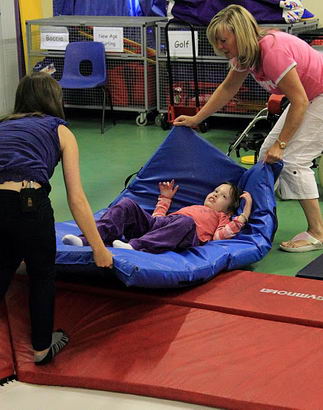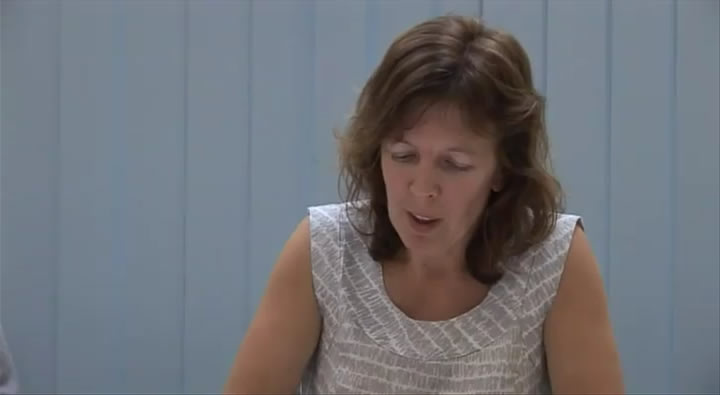
The 0-25 SEND Code of Practice (2015) and Special Educational Needs and Disability Regulations 2014 give guidance to professionals, educational settings, organisations and agencies that identify, assess and provide related support for children/young people with special educational needs/disabilities.
The documents set out the processes and procedures that all educational, health and care bodies and professionals having regard to the 0-25 SEND Code of Practice (2015) must or should follow in identifying, assessing and addressing these children's/young people's needs. The bodies and professionals must not ignore the guidance and regulations, and must take account of them when drawing up related policies.

The 0-25 SEND Code of Practice (2015) uses specific language to indicate the actions it expects from the bodies that must ‘have regard’ to it. In particular, the meaning of ‘should’ has a much stronger imperative than in everyday speech as explained below:
'In this Code of Practice, where the text uses the word "must" it refers to a statutory requirement under primary legislation, regulations or case law. The bodies listed in paragraph iv. must have regard to the Code of Practice. This means that whenever they are taking decisions they must give consideration to what the Code says. They cannot ignore it. They must fulfil their statutory duties towards children and young people with SEN or disabilities in the light of the guidance set out in it. They must be able to demonstrate in their arrangements for children and young people with SEN or disabilities that they are fulfilling their statutory duty to have regard to the Code…
'[W]here the text uses the word “should” it means that the guidance contained in this Code must be considered and that those who must have regard to it will be expected to explain any departure from it.' [Italics added; bold as original]

In relation to children who have, or may have, special educational needs/disabilities, teachers, in liaison with the SENCO, have three foci for action:
- Identification of special educational needs/disabilities
- 'SEN support'
- Statutory assessment and planning.
For more information about teacher action at foci 1 and 2, click on the associated bullet point; for the third focus, see later slides.

Children/young people with special educational needs/disabilities will need different levels of support according to their needs. For most children/young people with special educational needs, their needs can be met through appropriate, personalised, evidence-based and needs-focused, within-school provision.
This is achieved through 'SEN support' using a 'graduated approach' to intervention (see 0-25 SEND Code of Practice, 2015, sections 5.38-5.46) achieved through an 'assess-plan-do-review' cycle. Specialist expertise can be bought in as necessary through the 'Local Offer' to help the school meet the needs that a child may have.
Children/young people with severe, profound or complex learning difficulties/disabilities are more likely to have ‘high needs’ and to have details of their support and provision set out in a statutory plan (ie an Education Health and Care Plan or Statement of Special Educational Needs) supported by high needs funding. Although the graduated approach is described in relation to 'SEN support' its principles are equally important in implementing and evaluating Education, Health and Care Plan provision.
If a child/young person has a complex special educational need/disability, they may exceed the school (or other setting's) budget for meeting their educational needs.
In this case, a school may request the local authority to carry out a statutory
Education, Health and Care (EHC) Needs Assessment to find out exactly what the child's/young
person's needs are and what special help they require. This request may also be made
by a child/young person, their parents or any government agency representatives.
If
a child/young person has complex special educational needs requiring intervention
from more than one agency, the local authority may issue
an EHC Plan.
Before September 2014, the local authority
would have issued a Statement of
Special Educational Need under the old 2001 special educational needs framework. See
the statutory guidance, Transition to the New 0 to 25 Special Educational Needs and Disability
System (Department for Education, 2014.
To discover the differences between old and
new systems read Mencap's document,
'What's changed and what's stayed the same' here.
The UK Government and many other special educational needs charities also provide
useful information on the new reforms. Click here
for details.

Since September 2014, local authorities have carried out Education, Health and Care (EHC) Needs Assessments to ascertain whether a child/young person needs an EHC Plan.
There are key principles underpinning special education assessment, planning and
provision. These are identified in the
0-25 SEND Code of Practice (2015) as:
- Involving children, young people and parents in decision-making;
- Support for children, young people and parents;
- Coordination;
- Sharing information;
- Timely provision of service;
- Inter-agency working.
An Education, Health and Care (EHC) Plan describes the educational, health and social care needs of a child/young person under the age of 25 years. It identifies long term outcomes agreed with the young person/their parents and the necessary provision for the child/young person to work towards achieving them. Provided the young person remains in and will benefit from further education (not higher education) or training, EHC Plans can be maintained up to the age of 25.
The EHC Plan comes into force as soon as it is finalised by the local authority within a statutory time frame. From that time, the local authority must ensure that any provision specified in the plan is made available. The school's governors must do their best to make sure that the child gets the special educational help to achieve the outcomes set out in the EHC Plan.
The EHC Plan is legally binding and enforceable, and can be changed only through agreement by the parties concerned during a formal review, or by appeal to a Special Educational Needs and Disability Tribunal.
Children holding Statements of Special Educational Needs (SSENs] will gradually transition to EHC Plans between September 2014 and March 2018.
Click here to read more
about SSENs and the
old special
educational needs/disability framework.
The format of an Education, Health and Care (EHC) Plan is not stipulated in law and can be agreed locally, although it must include the following separately labelled sections summarised below:
A: Child's/young person's/parents' views, interests and aspirations;
B: Child's/young person's special educational needs;
C: Health needs related to SEN;
D: Social care needs related to SEN/disability;
E: The outcomes sought for the child/young person, including outcomes for adult life, and short-term target-setting;
F: The special educational provision required;
G: Any health provision reasonably required;
H1: Any social care provision under the Chronically Sick and Disabled Persons Act 1970;
H2: Any other social care provision
reasonably required;
I: The name (if required) and type of educational setting proposed;
J: Details of personal budget/direct payments;
K: List of EHC Needs Assessment advice and information (to be appended in full).
More detailed information and guidance on section contents is given in the 0-25 SEND Code of Practice (2015) (sections 9.62-9.76).
Note how these sections differ from those in
the example of a fictional statement
that can
be seen here:
Local authorities must check each child's progress and make sure that the statutory assessment document (ie Education, Health and Care (EHC) Plan or Statement of Special Educational Needs) continues to meet their special educational needs.
They must review the document under the relevant 2014 or 2001 legislation/regulations/guidance at least once a year, but they can do it more often if required.
EHC Plan reviews
The EHC Plan review
process is set out by law in the 0-25 SEND Code of Practice (2015) and regulations.
Within a statutory time frame:
- The LA must consult about the plan with parents, the young person and the school about the EHC Plan.
- Contributions from parents, the young people and involved professionals must be gathered then circulated.
- Following the meeting, a meeting report (including recommendations on EHC Plan amendments) must be circulated for discussion to everyone who contributed (in person, by proxy or in writing).
- The LA reviews the EHC Plan after the meeting, and must notify the parent/young person whether they intend to maintain it unchanged, amend it or cease it. Any decision concerning the educational contents of the plan can be appealed through mediation and/or the Tier 1 (special educational needs/disability) Tribunal.

The procedures for organising annual reviews are set out for:
Who attends a review?
Watch these two video clips in which a headteacher opens meetings to review the progress of two children, Marley and Sophia. Pay attention to the range of people involved and their roles, and consider the variety of expertise they bring.
-
 Review meeting 1 (Marley) - welcome and introductions0:30
Review meeting 1 (Marley) - welcome and introductions0:30 -
 Review meeting 2 (Sophia) - welcome and introductions0:37
Review meeting 2 (Sophia) - welcome and introductions0:37
The various parties who contribute to the statutory plan also contribute to the review. If key professionals are unable to attend review meetings, they must send in reports.

Reviews should, in relation to the child's/young person's progress towards outcomes and their access to teaching and learning:
- Gather and assess information to increase the effectiveness of their support;
- Review the effectiveness of their existing special educational needs provision;
- Review the effectiveness of health and social care provision;
- Consider, in the light of present circumstances, the continuing appropriateness of, and possible changes to, the Education, Health and Care (EHC) Plan (eg outcomes, level of provision, educational establishment, plan continuation, etc);
- Set new interim targets for the coming year and, where appropriate, agree new outcomes;
- Review any interim targets set by the early years provider, school or college or other education provider.

Legislation and guidance
- Special Educational Needs Code of Practice (Department for Education and Skills, 2001)
- Education (Special Educational Needs) (England) (Consolidation) Regulations 2001
- Special Educational Needs and Disability Regulations 2014
- Transition to the New 0 to 25 Special Educational Needs and Disability System. (Department for Education, 2014)
- Special Educational Needs and Disability Code of Practice: 0-25 years (Department for Education/Department of Health, 2015)
